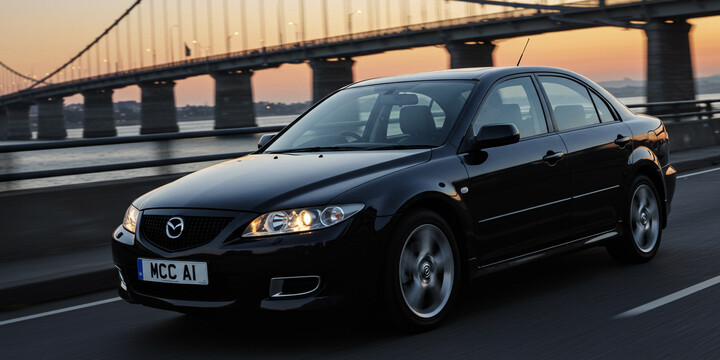
MAZDA 6 (2002-08) 5DR ESTATE 2.0 D 121 S
The MAZDA 6 (2002-08) 5DR ESTATE 2.0 D 121 S is a versatile and practical family estate car that offers a good balance of space, reliability, and driving comfort. Designed as a station wagon, it provides ample cargo capacity, making it an excellent choice for families, commuters, or anyone needing flexible storage. In the UK market, the Mazda 6 estate has earned a reputation for being a dependable workhorse with a sporty edge, standing out among rivals with its sleek design and comfortable ride.
Typically used for everyday errands, school runs, or longer journeys, the Mazda 6 estate is well-suited to those who value practicality without sacrificing style. It’s known for its fuel-efficient 2.0 D engine, making it a cost-effective choice for daily driving, with an average recorded mileage of around 111,797 miles. When compared to similar models, the Mazda 6 estate is appreciated for its reliability and user-friendly features. If you're considering a used car that blends spaciousness, efficiency, and a friendly driving experience, the Mazda 6 (2002-08) 5DR ESTATE 2.0 D 121 S remains a solid, sensible option worth exploring.

average use

The most recent mileage readings for the Mazda 6 (2002-08) 5DR Estate 2.0 D 121 S show a relatively evenly distributed spread across four ranges: 80,000–90,000 miles, 90,000–100,000 miles, 100,000–110,000 miles, and 160,000–170,000 miles. Each range accounts for 25% of the recorded vehicles, indicating a diverse mileage profile. Notably, there is a significant gap between the 110,000 and 160,000-mile marks, suggesting fewer vehicles are recorded in that particular range. This distribution could imply a varied usage pattern or mileage accumulation among owners.

vehicle values

Based on the available data, the private sale valuation for the Mazda 6 (2002-08) 5-door estate 2.0 D 121 S indicates that vehicles in this model are generally valued at 100% of their listed price within the range of 0 to 1,000 UK pounds. This suggests that the typical private sale price for these vehicles falls within the lower end of the market, reflecting their age and potential condition considerations. The data highlights that, at least within this sample, the valuation is consistent across the low-price spectrum, suggesting limited variation in private sale prices for older Mazda 6 models in this category.

production years

Based on the available data for the Mazda 6 (2002-08) 5DR Estate 2.0 D 121 S, the majority of the vehicles in the sample were manufactured in 2003, accounting for 50%. Vehicles from 2004 and 2002 make up smaller portions, each representing 25%. This distribution suggests that the most common model in the sample is from 2003, indicating it may be the most prevalent year of manufacture for this particular model within the dataset.

colour popularity

The data indicates that the majority of Mazda 6 (2002-08) 5-door estate 2.0 D 121 S models are painted in Silver, accounting for 75% of the sample. Black is significantly less common, representing 25%. This suggests that Silver is the predominant choice for this vehicle model's body colour, which may reflect consumer preferences or manufacturing trends during this period.

ownership cycle

The data indicates that for the Mazda 6 (2002-08) 5DR Estate 2.0 D 121 S, a significant portion—50%—of the vehicles have had four registered keepers, suggesting a common pattern of ownership duration. Additionally, 25% of these vehicles have had only three keepers, possibly indicating shorter ownership periods or more frequent sales. The remaining 25% have had seven registered keepers, which could suggest more frequent ownership changes for that segment of vehicles. Overall, the distribution shows that most vehicles tend to have between three and four owners, with some variations indicating different ownership histories.

engine choices

The data for the Mazda 6 (2002-08) 5-door estate 2.0 D 121 S indicates that engine capacity information is available for only a portion of the vehicles, with 25% from 1998 and 75% from 1999 models. Notably, all vehicles listed use diesel fuel exclusively, highlighting a consistent primary fuel type across this sample. The absence of petrol engine data suggests a strong diesel market preference for this model during the period.












